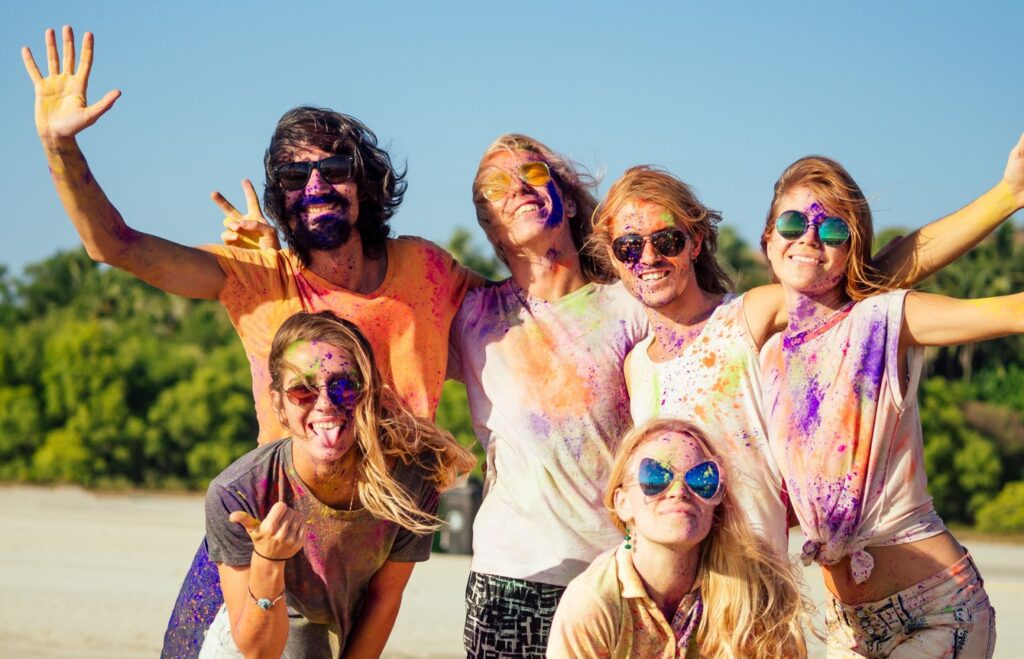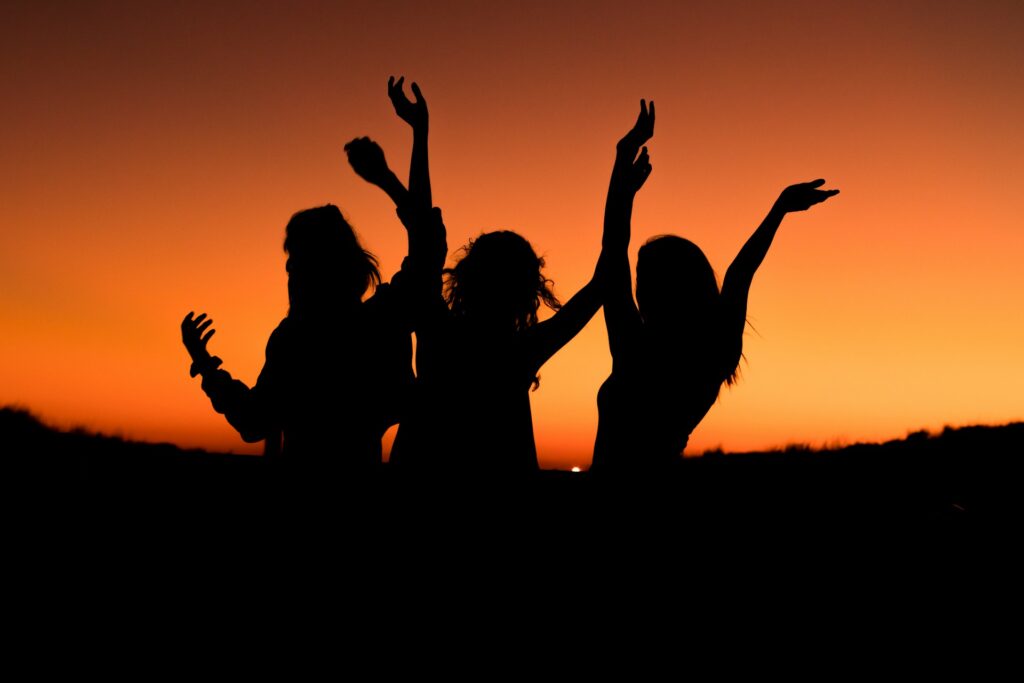When people first ask me, “What exactly is psilocybin-assisted therapy?” I can feel the layers behind the question. They want to know what it is, but they also want to know if it’s real, safe, and going to change their lives the way it’s changed mine.
At its core, psilocybin-assisted therapy is the intentional use of psilocybin (the psychoactive compound in certain mushrooms) in a guided, therapeutic setting, typically with the support of trained facilitators or therapists.
It’s a form of psychedelic therapy that’s not about “escaping” your problems but meeting them, sometimes for the first time, with clarity, compassion, and a new lens.
Let’s get the science out of the way first. Here’s what’s happening in your brain:
- Psilocybin binds to 5-HT2A serotonin receptors, creating a cascade of effects that increase neuroplasticity—your brain’s ability to form new connections.
- It also temporarily quiets the default mode network (DMN), which is the part of the brain linked to rigid self-identities, rumination, and ego chatter. When the DMN goes quiet, a sense of “oneness” or ego dissolution often follows—what many describe as a mystical experience.
While neuroscience is fascinating (and trust me, we’re only scratching the surface), what makes psilocybin therapy so powerful isn’t just what it does to your brain—it’s what it awakens in your spirit.
Psilocybin cracked me wide open. And I knew then that my life’s work would be creating safe, sacred spaces where others could experience the same kind of transformation.
Why Psilocybin Is Being Called a Breakthrough in Mental Health
Let’s get into the “why” behind the magic—because yes, there’s magic here, but it’s also backed by science that’s growing stronger every year.
When we talk about psilocybin as a “breakthrough therapy,” we’re not just throwing around buzzwords. That language comes directly from the FDA, which gave psilocybin that status after reviewing the data. Why? Because the outcomes we’re seeing—especially for treatment-resistant depression—are simply too profound to ignore.
So what’s going on, biologically speaking?
First, neuroplasticity.
Psilocybin has been shown to reopen the brain’s capacity for change. Think of your mental patterns as hiking trails in a forest. Depression, anxiety, and trauma often carve deep ruts that your thoughts unconsciously travel down again and again. Psilocybin doesn’t just help you step off the trail, it allows your brain to build entirely new paths.
That’s not metaphor. That’s measurable.
Second, psilocybin affects the Default Mode Network (DMN)—a network in the brain responsible for self-referential thinking, identity, and internal chatter. When the DMN is overly active, it’s linked to depression, anxiety, and obsessive thought loops.
Psilocybin temporarily quiets the DMN, which helps you experience a sense of detachment from the “I” that’s stuck in pain. For many, this is the moment the real healing begins, when they realize they are not their trauma, not their diagnosis, not the story they’ve been telling themselves for years.
It’s no wonder people describe it as spiritual.
When the DMN dims, many report feeling deeply connected—to others, to nature, to themselves in a way they hadn’t felt in decades. And when they return to ordinary consciousness, they often carry that shift with them.
Now, compare this to SSRIs, which I’m not here to knock. For some, they’re life-saving. But they often require daily use, come with side effects, and may numb the full spectrum of emotion.
Psilocybin, on the other hand, is non-addictive, usually involves only one to three sessions, and has shown equal, or even greater, efficacy in clinical trials.
That’s the difference between surviving and actually living.
What Actually Happens During Psilocybin Therapy?
Let me walk you through what a session feels like. This isn’t from a textbook but from the heart. I’ve gone through this process myself and I’ve helped 1,000’s of people do the same.
Phase 1 – Preparation & Intention Setting

Before the medicine ever touches your lips, the real work begins. I always say psilocybin doesn’t start in the ceremony—it starts the moment you say yes to the experience.
Preparation is everything. Emotional readiness. Nervous system readiness. Spiritual readiness.
At The Buena Vida, we guide you through this phase with clarity and care. We help you unpack your expectations, surface your fears, and most importantly, clarify your intention.
Your intention becomes the compass for your journey. It’s not a goal or a checklist. It’s a whispered question to the soul. Something like:
“What am I ready to release?”
“What truth needs to rise?”
Set And Setting
And then, there’s set and setting, a phrase you’ll hear often in the psychedelic world.
- “Set” is your mindset: your emotional, mental, and spiritual state.
- “Setting” is your external environment: the physical space, the energy of the room, the people holding it.
Both matter immensely.
Imagine opening up the deepest, most vulnerable parts of yourself, and doing that in a space that feels unsafe, sterile, or chaotic. That’s why we go to great lengths to create beauty, softness, and emotional safety at every step. Our spaces are designed not just for comfort, but for trust.
When I first sat in ceremony, before I ever became a facilitator, I didn’t realize how much I needed that. I’d done years of talk therapy, meditation, journaling. But nothing had touched the root of my grief, the pieces I’d locked so far away even I had forgotten they existed.
The medicine didn’t just “show me” those parts. It gave me a container to face them without shame. I felt supported, seen, and somehow—for the first time in a long time whole.
That’s why I do this work now. Because I know what’s possible when we take the time to prepare not just our schedules, but our spirits. When we show up with intention, humility, and a readiness to meet ourselves fully—psilocybin doesn’t just take us on a trip. It brings us home.
Phase 2 – The Journey Itself

This is the part most people are curious and sometimes nervous about. What does a psilocybin therapy session actually feel like?
Yes, you’re taking a psychedelic. Yes, you may see visuals. But this isn’t a party drug experience, and it’s not about “tripping.” It’s about letting go, of control, of stories, of the need to analyze or explain everything. And that’s where the healing begins.
We work with therapeutic or “macro” doses—usually somewhere between 2 to 5 grams of dried psilocybin mushrooms, depending on your sensitivity, medication history, and readiness. For reference, this is significantly more than a microdose (which people sometimes take to boost creativity or mood), but still very intentional. It’s enough to dissolve your ordinary consciousness, not overwhelm it.
You’ll lie down in a beautiful, quiet space, often with a cozy blanket and an eye mask to help you turn inward.
We play carefully curated music—sometimes live, sometimes recorded—that guides the emotional flow of the journey. Sound becomes the medicine’s dance partner. It moves things that words can’t reach.
And then, there are the facilitators.
We’re not there to “fix” you or interpret your visions. We’re there to hold you. To be a steady, grounded presence if things get intense. To remind you, if you forget, that you are safe, and everything you’re feeling is okay.
A common fear that comes up is, “Will I lose control?” And I get it, surrendering is terrifying, especially for those of us who’ve had to keep it together for years just to survive.
Here’s what I want you to know:
You are not falling apart.You are falling into yourself.
And you’re not doing it alone. We create an environment where you can gently surrender, knowing that someone is watching over you with care, not judgment. You don’t have to manage anyone’s energy but your own. You get to finally put the armor down.
Physically, you might feel warm or cold, heavy or light. Emotionally, you may laugh, cry, revisit memories, or encounter something totally unexpected. Some people feel like they’ve stepped into a dream. Others meet parts of themselves they’ve forgotten. There is no “right” way to journey—only your way.
It’s not always easy. In fact, sometimes it’s beautifully hard. But what’s waiting on the other side of that surrender is something I’ve seen transform people from the inside out. Including myself.
This isn’t about escaping life. It’s about coming back to it—clearer, softer, stronger.
Phase 3 – Integration & Aftercare

The journey doesn’t end when the music fades and the mushrooms wear off. In many ways, that’s when the real work begins.
You might ask, “What happens after the trip?” And I always say: that’s where the healing either takes root—or fades away.
Integration is the bridge between insight and transformation. Without it, those beautiful realizations you had in ceremony, the forgiveness, the clarity, the self-love, can drift away like a dream you forget by lunchtime. But with proper support, those moments become anchored in your daily life. They inform how you show up in your relationships, how you speak to yourself, how you move through the world.
We offer a structured integration process that includes guided journaling prompts, sharing circles, one-on-one coaching, and access to continued resources after you leave. Integration isn’t just spiritual fluff—it’s grounded, real-world practice. It’s how you digest what you’ve seen, felt, and remembered.
Sometimes it means sitting with new awareness around a core wound. Other times it means finally forgiving yourself for something you’ve carried for decades. Often, it’s subtle. You start noticing that you’re less reactive.
More open. More honest.
Integration doesn’t happen alone. One of the most underestimated aspects of this work is community. At our retreats, guests often form deep bonds that they stay in touch for years. Why? Because they’ve witnessed each other in raw truth. That kind of connection stays with you.
I’ve seen guests come in feeling isolated and leave with not just insight but belonging. And in a world that’s starving for connection, that may be the most healing thing of all.
So, if you’re wondering what to expect “after the trip,” here’s my honest answer. Expect change. But give it space. Give it structure. Give it support.
We don’t believe in quick fixes. We believe in lasting change. And that only happens when the journey continues after the ceremony, when you bring the medicine home with you, not in your body, but in your heart.
Who Is Psilocybin-Assisted Therapy For?
Psilocybin-assisted therapy isn’t for everyone—but for the right person, at the right time, it can be nothing short of life-altering.
The Ideal Candidate
If you’re someone who’s been in the trenches with depression, anxiety, trauma, or chronic stress, and nothing seems to touch the root of it—this work might be calling you.
In fact, many of the guests who come through our retreats have a strikingly similar story: “I’ve tried everything. Meds. Talk therapy. Self-help. And I still feel stuck.”
I hear it over and over. And I’ve lived it, too.
That’s why I often describe psilocybin-assisted therapy as a path for the seekers—especially those dealing with treatment-resistant depression, complex PTSD, generalized anxiety, or that deep, unnamed ache that often shows up as existential grief. You don’t have to have a clinical diagnosis to benefit. Sometimes, just being human in this modern world is enough of a reason to want healing.
I’ll never forget a guest who told me, after her ceremony, “I’ve been in therapy for ten years and didn’t cry once. I cried more in four hours here than I have in a decade. And for the first time, I feel lighter.”
That’s the kind of emotional breakthrough psilocybin can offer—when it’s held with skill, safety, and heart.
From Breakdowns to Breakthroughs
I’ve sat in the same dark place many of you are in right now. I found a path through. It wasn’t easy. But it was real. And it lasted.
I know what it feels like to be exhausted by your own mind. To feel like you’ve done all the right things—therapy, journaling, yoga, meds—and still feel disconnected, anxious, or numb.
I know what it’s like to carry trauma so deeply in your body that you start believing it is who you are.
And I know, from my own lived experience and from guiding over a thousand guests through their healing, that psilocybin-assisted therapy can offer something many people don’t even know is possible: a total reset.
No, it’s not a magic bullet. This work is deep, and it can be challenging. But when it’s held in the right container, with the right support—it can shift your entire internal landscape.
One journey doesn’t “fix” you. But it might finally show you the door you’ve been looking for.
And from there, your real healing begins.
🌿 Thinking About Psilocybin Therapy? Let’s Talk.

If your heart is tugging, your intuition is curious, or your soul is just tired—we’re here.
At The Buena Vida, we hold intentional psilocybin retreats in beautiful, safe, deeply nurturing spaces—designed to help you soften, surrender, and heal.
Whether you’re just starting to explore psychedelics or you’ve been walking this path for years, there’s a place for you in our circle.
✨ Ready to explore next steps?


